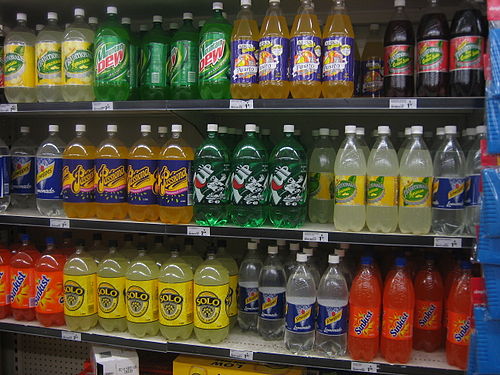The consumption of sugary sodas has grown so much over the last three decades that they are now the number 1 source of calories in the diets of American teenagers, says a new report issued by The Yale Rudd Center for Food Policy and Obesity. The authors say that their study is the most comprehensive and scientifically based assessment of sugary beverage nutrition and marketing ever carried out. They found that the sugary drinks industry specifically targets young Americans, especially Hispanics and African-Americans.
Numerous studies have clearly and compellingly demonstrated the harmful health effects of consuming sugary drinks, including becoming overweight or obese, tooth decay, and eventually raising the risk of developing diabetes type 2 and several cardiovascular diseases and cancers.
Just one regular (non-diet) soda or energy drink provides a young person with more sugar than they will need for a whole day. However, drinks companies relentlessly continue marketing their sugar-laden products to children and adolescents.
Sugary drinks are a worrying source of empty calories among American children and teenagers. Empty calories are calories with very low nutritional value – their vitamin, electrolyte, mineral, etc. content is extremely low. All the consumer is getting is energy. Nutritionists say that empty calories are becoming an ever-growing part of malnutrition. In the USA, sugary drinks contribute 22% of empty calories consumed by children and young adults.
The authors, in the Summary of their Report, gave the following examples of worrying facts regarding children and teens in America today:
- Young Americans consumed 20% more calories from sugary beverages in 1999-2004 than they did in 1989-1994.
- A child who consumed just one 8-ounce sugary drink can each day has a 60% higher chance of eventually becoming obese, compared to other children. This rate of sugary drink consumption in the USA is common.
The American Heart Association, CDC (Centers for Disease Control and Prevention), AAP (American Academy of Pediatrics), and scores of other organizations are urging Americans and US authorities to take drastic action to bring down the consumption of added sugars, including the addition of sugar to drinks.
The authors say the sugary drinks industry is specifically aiming at children and teenagers
The AAP said publicly:
“Energy drinks have no place in the diet of
children and adolescents.”
When companies spend more on TV advertising of sugary drinks, their sales go up, the authors wrote (“there is higher consumption”). Yet the industry’s proportion of advertising expenditure aimed at children and teenagers is higher than any other food category. Most drink advertising promotes beverages with added sugar.
Certain groups, such as Hispanics, African-Americans and children from low-income families are often targeted disproportionately, the authors explained, compounding an already higher risk of obesity and obesity-related illnesses and conditions.
According to the American Beverage Association:
“Sugar sweetened beverages are not driving health issues like
obesity and diabetes.”
The industry says that sugary-drink consumption has dropped over the last few years. They add that studies have shown that sugary beverages contribute to only 7% of calories in the average American diet. They also claim that the number of calories in the market from sugary drinks is 21% lower today than it was a decade ago.
The beverage industry says all these achievements are:
“Due in part to industry’s innovation in bringing more no- and low-calorie beverage options to market.”
Over a 5-year period up to 2010, carbonated soft drink consumption per head in the USA dropped 13%, while the consumption of fruit drinks fell 17%.
The authors of the report welcome these “small steps in the right direction”. However, they emphasize that the average person in America still consumes over three 8-ounce servings of carbonated soft drinks, teas, sports drinks, enhanced water, energy drinks and teas per day.
Children and teenagers need to be protected and the industry should do much more to help protect them, the authors stress. They should definitely not be encouraged to consume products that harm their health.
Below are some highlighted data from the report:
- They analyzed over 600 sugary drinks and energy drinks with sugar added, including non-diet (regular) soda, fruit drinks which were not 100% juice, sports drinks, energy drinks, flavored water and iced tea.
- They also looked at diet children’s fruit drinks and diet energy drinks.
- The report covered 91% of all sugary and energy drink product sales in the USA.
- Regular soda had the highest sales, followed by energy drinks.
- Sales of regular soda were twice as high as those for diet soda.
- Full-calorie sports drink sales were five to six times as high as diet sports drink sales.
- Full calorie fruit drink sales were five to six times as high as their diet equivalent sales.
- Full calorie flavored water sales were about the same as their diet equivalent sales.
Written by Christian Nordqvist
